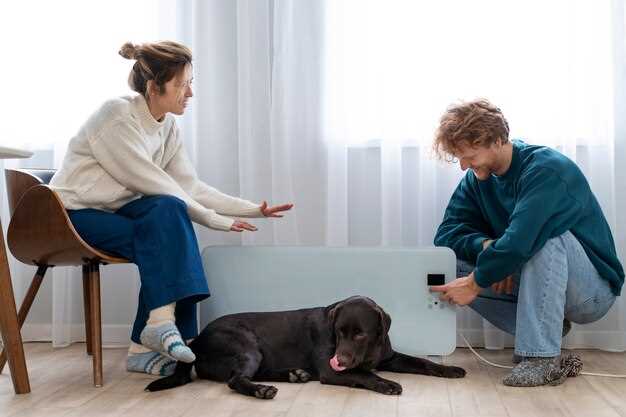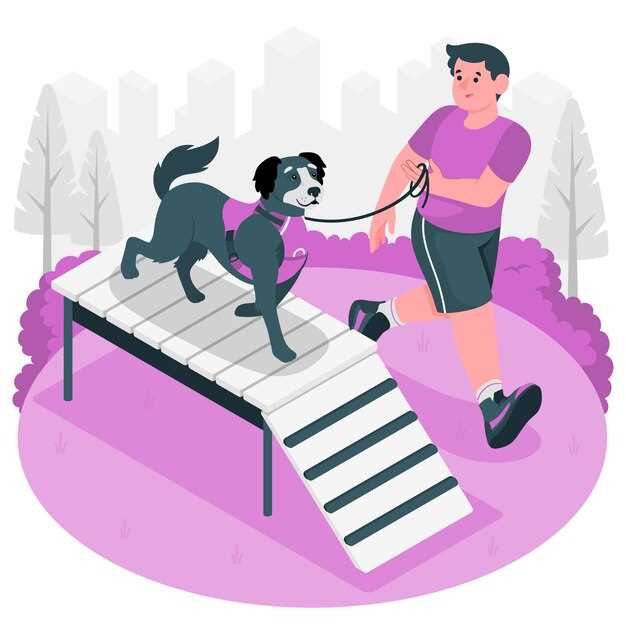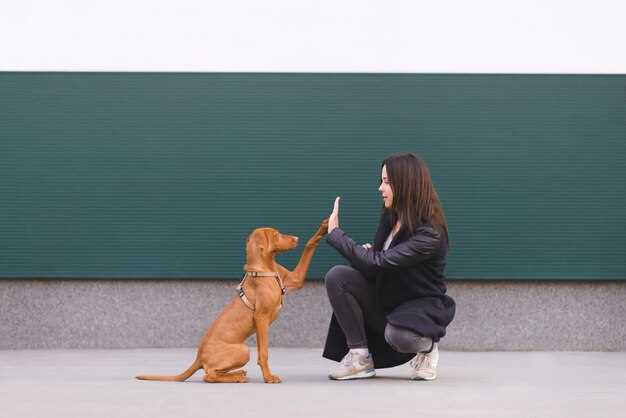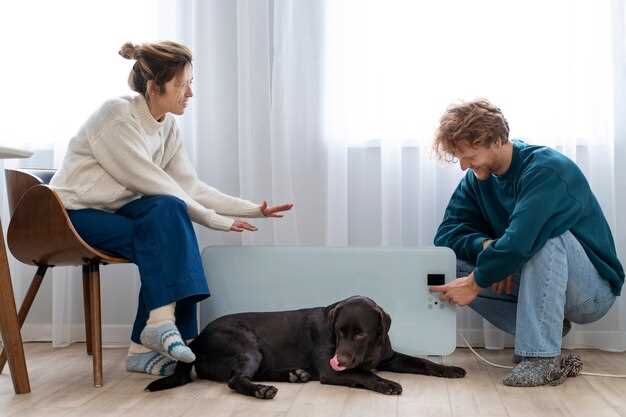Start with the golden rule: always create a comfortable and welcoming environment inside the crate. Place soft bedding and a beloved toy to transform it into a cozy retreat rather than a confining cage. This simple step can positively condition your pet to view the crate as a safe haven, making training a smoother process.
Incorporate treats as a cornerstone of positive reinforcement. Begin by tossing a favorite treat inside the crate and allowing your dog to retrieve it. Continue this until your pet willingly walks into the crate without hesitation. Utilize small, flavorful treats that your dog already enjoys, repeating the process several times for retention.
Pay close attention to your timing. Consistency is key, so aim to engage in crate training sessions at similar times each day. Short sessions initially build familiarity without overwhelming your pet. Gradually increase the time your pet spends in the crate, rewarding calm behavior with gentle praise and more treats.
Recognize body language signals from your pet. Monitor for signs of stress or anxiety, such as pacing or whining, and adjust your approach accordingly. Perhaps a softer voice or a gentle touch could be soothing. Addressing anxiety early can prevent any long-term aversion to the crate, paving the way for a successful training experience.
Finally, maintain a relaxed demeanor yourself. Dogs are highly perceptive and can pick up on human emotions. Projecting calm confidence can reassure your pet, reinforcing the idea that being in the crate is a normal and positive part of their routine. This mutual trust is the linchpin of positive reinforcement training, setting the stage for a harmonious coexistence.
Understanding the Positive Crate Method

Introduce the crate as a comfortable and secure haven for your dog to rest and feel safe. Avoid using it as a form of punishment; instead, transform it into a positive space with these steps:
Introduce Gradually: Allow your dog to explore the crate with the door open. Place some of their favorite toys or treats inside to draw them in. This encourages curiosity and makes the crate more appealing.
Positive Associations: Create positive associations by feeding your dog meals near or inside the crate. Use treats to reinforce that being in the crate is a rewarding experience. Praise and affection when they enter willingly foster a sense of trust.
Short, Positive Sessions: Practice brief periods with the door closed while you remain nearby, gradually increasing the duration as your dog becomes more at ease. Never rush the process; patience is key to reducing anxiety.
Consistent Routines: Incorporate crate time into your daily schedule, especially during naps or quiet time. A consistent routine helps your dog understand when it’s time to relax, easing transition into longer stays.
Comfort and Safety: Ensure the crate is comfortable with soft bedding. It should be spacious enough for them to stand, turn around, and lie down comfortably. Safety is paramount, so regularly inspect for any sharp edges or damage.
By employing these techniques, the crate becomes a place of comfort rather than fear. Reinforce positive behavior with each interaction, and your dog will soon associate the crate with feelings of security and peace.
What is the Positive Crate Method?
Focus on creating a welcoming atmosphere inside the crate for your dog. Place a comfortable bed and a favorite toy or chew item inside to make the crate an inviting space. Encourage your dog to explore the crate by tossing in treats and using a cheerful voice to coax them in. Never force your dog into the crate, as this could cause anxiety. Instead, allow them to enter at their own pace, rewarding them each time they do.
Integrate crate sessions into daily routines to help your dog adjust more smoothly. Start with short intervals, gradually increasing the time as your dog becomes comfortable. Use positive reinforcement by offering treats and praise when your dog enters the crate and remains calm. Patience is key; different dogs adjust at various rates.
Consistency is vital for success. Stick to a predictable schedule for crate time, such as during mealtimes or while you’re out. This helps your dog to associate the crate with consistent, positive experiences, reducing stress and creating a sense of security.
| Steps | Tips |
|---|---|
| Introduce the Crate | Use snacks and toys to encourage entry. |
| Make it Comfortable | Add bedding and familiar items. |
| Gradual Adaptation | Start with short intervals, increasing over time. |
| Use Positive Reinforcement | Reward calm behavior with treats and praise. |
| Maintain Consistency | Stick to a regular schedule to build familiarity. |
The Psychology Behind Using a Crate
Recognize that a crate provides dogs with a sense of security and a personal space to retreat. Dogs, being den animals, naturally seek out confined spaces to rest. By emulating this instinctive behavior, a crate becomes more than just a training tool; it transforms into a sanctuary for your pet.
- Establishing Boundaries: The structured environment of a crate teaches dogs self-control and boundaries. This reduces anxiety and helps them understand household rules. By using a crate from an early age, dogs learn the limits of their personal space, which translates to their behavior in the broader home environment.
- Reducing Separation Anxiety: When a dog associates the crate with positive experiences, it starts viewing it as a safe haven, which can help reduce feelings of anxiety when left alone. Place their favorite toys and treats in the crate to encourage this mindset.
- Creating a Routine: Consistent crate training fosters a routine, which is something dogs thrive on. Predictability alleviates stress and equips the dog to anticipate and adapt to daily activities, such as feeding and potty breaks.
- Enhancing Focus and Calmness: A crate can help in calming an overexcited dog. Allowing them downtime in their crate can reduce over-stimulation and promote better focus when engaging in training or playtime.
- Ensuring Safety: A crate not only ensures the safety of your home from potential damage but, more importantly, keeps the dog safe from household dangers. It becomes a safe spot during travels, ensuring that the dog feels secure across various environments.
Understand that while the crate offers numerous psychological benefits, it should always be associated with positive experiences. Consistently using positive reinforcement ensures that the crate becomes a beneficial space for both the dog and the owner.
Common Misconceptions About Crate Training
Crate training is not about confining your dog, but rather creating a safe space they will learn to love and view as their own. Here’s how to address some common misconceptions:
- Crates are cruel. A properly introduced crate becomes a sanctuary for your dog, providing them with a secure place to relax. Ensure the crate is comfortable, with adequate space for your pet to stand, turn, and lie down.
- My dog will feel trapped. Dogs are den animals by nature. A crate mirrors this instinct, offering a private retreat where they can feel protected. Avoid using the crate as a form of punishment to maintain positive associations.
- Crate training is only for puppies. Crate training benefits dogs of all ages. Older dogs may take longer to adjust, but with patience and consistent reinforcement, they will appreciate the comforting environment.
- Crates are only for when I’m not home. Utilize the crate as part of daily routines, even when at home. This can help dogs associate the crate with everyday comfort, not just isolation when you’re away.
- Using a crate will not help with house training. Crates can be instrumental in house training, since dogs naturally avoid soiling their resting places. Be proactive with regular breaks to optimize learning.
- Freedom will be limited. Think of the crate as a tool to build more independence. Once your dog is calmly settled in their crate, they’ll be more confident and secure in other aspects of life.
By addressing these misconceptions with clarity and facts, you’ll foster a healthier, happier relationship with your pet and create a safe, enriching environment for them to grow and thrive.
Benefits of Crate Training for Puppies
Crate training establishes a sense of security for puppies, providing them with a safe haven that mimics the den environment their wild ancestors cherished. This practice supports the development of independence by offering a personal space where your puppy can retreat and relax. As a result, this approach reduces stress and prevents destructive behaviors when home alone.
During housebreaking, crate training proves invaluable. Puppies naturally avoid soiling their sleeping area, which encourages them to control their bladder and bowel movements. This habit accelerates the toilet training process, making it more manageable for both the owner and the puppy.
Scheduling crate time can introduce a routine that delights puppies, offering them structure amidst the novelty of their new surroundings. This regularity helps in managing energy levels and enhances bedtime discipline, ultimately fostering better sleep patterns.
Travel becomes a breeze with a crate-trained puppy. Whether visiting the vet or going on a road trip, a familiar crate reduces anxiety. This can lead to a smoother experience with less stress for both owner and pet.
Finally, crate training lays the groundwork for teaching other critical commands and behaviors. A puppy that understands the crate as a positive space is more likely to respond keenly to associated cues, enhancing overall obedience training.
Implementing Crate Training for Your Puppy

Begin with selecting the right crate size; it should be large enough for your puppy to stand, turn around, and lie down comfortably, but not too spacious. This prevents the puppy from using one end as a restroom.
Introduce the crate in a positive manner. Place it in a high-traffic area of your home so your puppy feels part of family activities. Make it inviting with a comfortable bed or blanket and a few toys and treats.
Encourage exploration by leaving the crate door open during the day and casually tossing treats inside. This builds positive associations and dispels any fears of confinement.
Begin short, supervised crate sessions when your puppy seems curious and comfortable entering the crate willingly. Close the door gently and stay nearby, gradually increasing the time your puppy spends inside. Maintain a calm and reassuring presence to help ease any separation anxiety.
Integrate crate time with your puppy’s schedule. Use it during nap times or after play sessions when your puppy is more likely to settle down. This routine reinforces the crate as a relaxing space rather than a place of isolation.
Reward your puppy consistently for calm behavior inside the crate with praise or a treat upon exiting. This reinforces the idea that the crate is a safe and rewarding space.
Avoid using the crate as a form of punishment, as this creates negative associations. If your puppy shows signs of distress, reduce the length of crate time and gradually rebuild comfort levels with positive reinforcement.
Practice patience. Consistency in crate training leads to success and supports development of a confident and well-adjusted pet.
Choosing the Right Crate Size and Type
A crate should allow your dog to stand up, turn around, and lie down comfortably. Measure your dog from the tip of the nose to the base of the tail and from the top of the head to the ground. Add two to four inches to each measurement to determine the ideal crate size. This space ensures a comfortable fit without giving too much room, reducing the risk of accidents.
When selecting a crate, consider material and durability. Wire crates offer excellent ventilation and visibility, making them a good choice for most dogs. They’re also collapsible for storage, which adds convenience for travel. Plastic crates provide a more enclosed space, which can be comforting for anxious dogs and are suitable for travel, especially air travel, since they often meet airline regulations. Soft-sided crates are light and portable, ideal for smaller dogs or those accustomed to being crated.
Another factor is the specific needs of your dog. Puppies, for example, may benefit from crates with dividers that allow the space to expand as they grow. Older or anxious dogs might prefer a den-like environment, achievable with covered or partially closed crates. Always choose a crate with a secure door or latch mechanism to ensure safety.
The right crate enhances your dog’s sense of security and supports effective training. Assess your living situation, travel habits, and your dog’s personality before making a decision, ensuring the crate meets all practical requirements while offering comfort and security to your pet.
Introducing Your Puppy to the Crate
Place the crate in a popular spot where your puppy spends time, like the living room, so it becomes a familiar object. Introduce it as a cozy retreat rather than a place of isolation. Encourage your puppy to explore the crate by placing treats and toys inside. Leave the door open and let them go in and out freely without pressure.
Each time your puppy enters the crate, offer lavish praise and a treat. This positive association encourages your pet to view the crate as a rewarding space. Gradually increase the time your puppy spends inside with the door closed while you remain nearby, reinforcing reassurance. Consistent repetition of this process builds confidence and comfort in using the crate.
Establish a routine by incorporating crate time into daily activities such as feeding or play sessions. After playtime, allow a period of rest in the crate to strengthen the routine. Pay attention to your puppy’s cues and adjust the duration of crate time according to their comfort level, ensuring it remains a positive experience.
Creating a Positive Crate Environment
Introduce familiar and comforting items in the crate such as your pet’s favorite blanket or a well-loved toy. This can help the space feel personal and safe for your furry friend. Consistency plays an important role here: make sure the bedding is comfortable, providing a soft surface where they can relax.
Enhance the atmosphere with a soothing sound, like soft classical music or white noise, to create a calming ambiance. Position the crate in a quiet area of the house, away from high-traffic zones, to ensure a peaceful environment where your pet can rest undisturbed.
Utilize positive reinforcements such as treats and gentle praise to encourage your pet to enter and stay in the crate willingly. Offer a treat when they first enter, reinforcing crate time as a positive experience. This encourages a sense of safety and comfort associated with the crate.
During daytime, let natural light in but ensure it doesn’t cause overheating. As night falls, maintain warmth with a light cover that doesn’t hinder airflow, providing a cozy den-like atmosphere that promotes restfulness.
Steps to Reinforce Positive Crate Behavior
Begin by associating the crate with comfort and positive experiences.
| Step | Action |
|---|---|
| 1 | Place favorite toys or treats inside the crate to create a welcoming environment. |
| 2 | Encourage exploration by using positive words and a friendly tone. Allow your pet to enter the crate voluntarily. |
| 3 | Practice short intervals. Close the door for brief periods while remaining nearby. |
| 4 | Gradually increase the time spent inside as comfort grows. Ensure the time is enjoyable with unique treats. |
| 5 | Use commands like “crate” consistently when directing your pet to enter. |
| 6 | Reward calm behavior upon entering and exiting the crate with verbal praise or small treats. |
| 7 | Ensure the crate is in a peaceful, distraction-free area of your living space to promote relaxation. |
Consistent reinforcement using these steps helps create a positive and secure relationship with the crate.
Q&A:

How long should I leave my dog in the crate during training sessions?
When starting crate training, it’s important to keep sessions short and positive. Initially, you might leave your dog in the crate for 10-15 minutes and gradually increase the time as your dog becomes more comfortable. Puppies especially should not be left in the crate for too long, as they can only hold their bladder for a short period. For adult dogs, the time can be extended, but it’s generally recommended not to exceed four to five hours during the day.
What should I do if my dog seems anxious or scared in the crate?
It’s crucial to ensure that the crate is a safe and inviting space for your dog. Start by placing familiar items inside, such as a favorite blanket or toy, to make it more comforting. Spend time near the crate, offering treats and praise when your dog shows interest or goes inside. Gradually, your dog will associate the crate with positive experiences. If anxiety persists, it might be helpful to consult a professional trainer or veterinarian to explore additional strategies.
Is it suitable to use crate training for all dog breeds?
Crate training is generally beneficial for most dog breeds as it satisfies their natural denning instincts. However, the approach should be tailored to the individual needs and temperament of the dog. Some breeds, like those with a more independent streak, may take longer to adapt than others. Observing your dog’s reactions and adjusting the method accordingly ensures that the process is stress-free and effective.
Can crate training help with housebreaking my puppy?
Yes, crate training is a highly effective tool for housebreaking puppies. Since dogs naturally avoid soiling their sleeping area, a crate helps teach bladder control. By providing a consistent schedule and taking the puppy outside frequently, especially after meals or naps, they learn to associate doing their business outside with positive reinforcement. Consistency and patience are key to successful house training.
What should I do if my dog barks or whines while in the crate?
If your dog barks or whines in the crate, it’s often their way of expressing discomfort or a need, like needing to go outside or wanting attention. Initially, ensure all their basic needs are met before crate time. Avoid letting them out when they whine, as it can reinforce the behavior. Instead, wait for a lull in barking or whining before opening the crate. Rewarding quiet behavior with praise or a treat can help encourage calmness over time.
How can I make my puppy comfortable with crate training without causing stress?
To ensure your puppy is comfortable with the crate, introduce it gradually and positively. Start by placing the crate in a common area with the door open, allowing the puppy to explore it at their leisure. You can encourage them by placing treats or toys inside. Make the crate a welcoming space by adding a soft blanket or bedding. Once your puppy is interested in the crate, begin short periods of containment while you are nearby, gradually increasing the time as they become more accustomed. Always use positive reinforcement, such as treats or praise, when your puppy demonstrates calm behavior in the crate. It’s crucial to remain patient and consistent without forcing the puppy, as this will help build a positive association and reduce stress.
